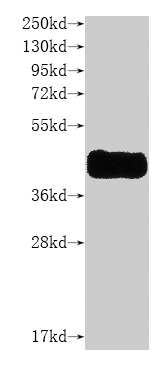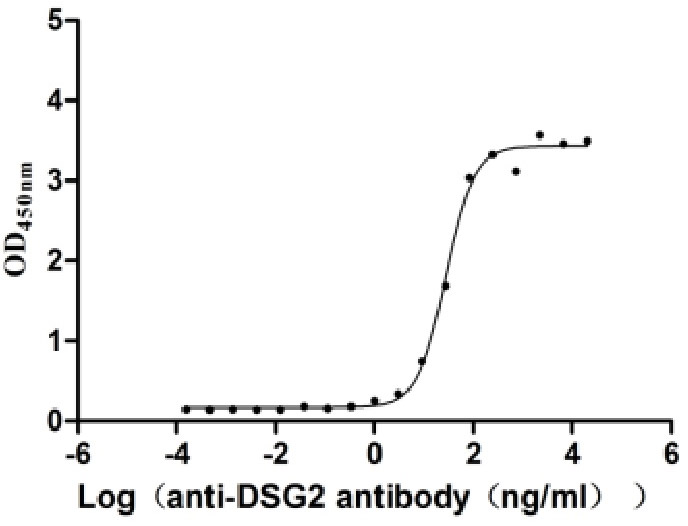Recombinant Human HLA class II histocompatibility antigen, DQ alpha 1 chain (HLA-DQA1), partial
In Stock-
中文名稱:人HLA-DQA1重組蛋白
-
貨號:CSB-EP365686HU
-
規格:¥1344
-
圖片:
-
其他:
產品詳情
-
純度:Greater than 90% as determined by SDS-PAGE.
-
基因名:
-
Uniprot No.:
-
別名:CD; CELIAC1; DC 1 alpha chain; DC alpha; DC-1 alpha chain; DC-alpha; DC1; included; DQ alpha 1 chain; DQ-A1; DQ-DRW9 alpha chain; DQA1_HUMAN; FLJ27088; FLJ27328; Gluten-sensitive enteropathy (celiac disease); GSE; HLA class II histocompatibility antigen; HLA class II histocompatibility antigen; DQ alpha 1 chain; HLA class II histocompatibility antigen; DQ(W3) alpha chain; HLA-DCA; HLA-DQA; HLA-DQA1; HLA-DQA1 major histocompatibility complex; class II; DQ alpha 1; HLADC histocompatibility type; Immune response antigens HIa; included; leucocyte antigen DQA1 ; leukocyte antigen alpha chain ; LOC100133678; LOC100507686; LOC100509457; Major histocompatibility complex; class II; DQ alpha 1; MGC149527; MHC class II antigen; MHC class II DQA1; MHC class II HLA-D alpha glycoprotein; MHC class II HLA-DQ alpha 1; MHC class II surface glycoprotein; MHC HLA-DQ alpha; OTTHUMP00000029141; OTTHUMP00000176885; OTTHUMP00000178551; OTTHUMP00000178552; OTTHUMP00000233817
-
種屬:Homo sapiens (Human)
-
蛋白長度:Extracellular Domain
-
來源:E.coli
-
分子量:25.4kDa
-
表達區域:24-213aa
-
氨基酸序列EDIVADHVASYGVNLYQSYGPSGQYTHEFDGDEQFYVDLGRKETVWCLPVLRQFRFDPQFALTNIAVLKHNLNSLIKRSNSTAATNEVPEVTVFSKSPVTLGQPNILICLVDNIFPPVVNITWLSNGHSVTEGVSETSFLSKSDHSFFKISYLTLLPSAEESYDCKVEHWGLDKPLLKHWEPEIPAPMSE
Note: The complete sequence may include tag sequence, target protein sequence, linker sequence and extra sequence that is translated with the protein sequence for the purpose(s) of secretion, stability, solubility, etc.
If the exact amino acid sequence of this recombinant protein is critical to your application, please explicitly request the full and complete sequence of this protein before ordering. -
蛋白標簽:N-terminal 6xHis-tagged
-
產品提供形式:Liquid or Lyophilized powder
Note: We will preferentially ship the format that we have in stock, however, if you have any special requirement for the format, please remark your requirement when placing the order, we will prepare according to your demand. -
緩沖液:If the delivery form is liquid, the default storage buffer is Tris/PBS-based buffer, 5%-50% glycerol.
Note: If you have any special requirement for the glycerol content, please remark when you place the order.
If the delivery form is lyophilized powder, the buffer before lyophilization is Tris/PBS-based buffer, 6% Trehalose. -
儲存條件:Store at -20°C/-80°C upon receipt, aliquoting is necessary for mutiple use. Avoid repeated freeze-thaw cycles.
-
保質期:The shelf life is related to many factors, storage state, buffer ingredients, storage temperature and the stability of the protein itself.
Generally, the shelf life of liquid form is 6 months at -20°C/-80°C. The shelf life of lyophilized form is 12 months at -20°C/-80°C. -
貨期:3-7 business days
-
注意事項:Repeated freezing and thawing is not recommended. Store working aliquots at 4°C for up to one week.
-
Datasheet & COA:Please contact us to get it.
相關產品
靶點詳情
-
功能:Binds peptides derived from antigens that access the endocytic route of antigen presenting cells (APC) and presents them on the cell surface for recognition by the CD4 T-cells. The peptide binding cleft accommodates peptides of 10-30 residues. The peptides presented by MHC class II molecules are generated mostly by degradation of proteins that access the endocytic route, where they are processed by lysosomal proteases and other hydrolases. Exogenous antigens that have been endocytosed by the APC are thus readily available for presentation via MHC II molecules, and for this reason this antigen presentation pathway is usually referred to as exogenous. As membrane proteins on their way to degradation in lysosomes as part of their normal turn-over are also contained in the endosomal/lysosomal compartments, exogenous antigens must compete with those derived from endogenous components. Autophagy is also a source of endogenous peptides, autophagosomes constitutively fuse with MHC class II loading compartments. In addition to APCs, other cells of the gastrointestinal tract, such as epithelial cells, express MHC class II molecules and CD74 and act as APCs, which is an unusual trait of the GI tract. To produce a MHC class II molecule that presents an antigen, three MHC class II molecules (heterodimers of an alpha and a beta chain) associate with a CD74 trimer in the ER to form a heterononamer. Soon after the entry of this complex into the endosomal/lysosomal system where antigen processing occurs, CD74 undergoes a sequential degradation by various proteases, including CTSS and CTSL, leaving a small fragment termed CLIP (class-II-associated invariant chain peptide). The removal of CLIP is facilitated by HLA-DM via direct binding to the alpha-beta-CLIP complex so that CLIP is released. HLA-DM stabilizes MHC class II molecules until primary high affinity antigenic peptides are bound. The MHC II molecule bound to a peptide is then transported to the cell membrane surface. In B-cells, the interaction between HLA-DM and MHC class II molecules is regulated by HLA-DO. Primary dendritic cells (DCs) also to express HLA-DO. Lysosomal microenvironment has been implicated in the regulation of antigen loading into MHC II molecules, increased acidification produces increased proteolysis and efficient peptide loading.
-
基因功能參考文獻:
- The analysis showed a significant association between rs2187668-(A) allele and idiopathic membranous nephropathy susceptibility, and the intervention of this mutation might bring new therapeutic strategy for idiopathic membranous nephropathy PMID: 30383665
- we described differences in expression of DQA1 and DQB1 gene alleles in whole-blood cells, monocytes and B lymphocytes. Our findings support the idea that expression level of HLA class II alleles is the result of both promoter- and cell-specific factors. PMID: 29663655
- The C>G mutation in the HLA-DQA1 gene was associated with the occurrence of Spinal tuberculosis. PMID: 29795056
- Allelic frequency distributions for SNP rs2187668 within HLA-DQA1 were significantly different between the idiopathic membranous nephropathy and control groups. PMID: 28849274
- results revealed that a novel independent variant in the promoter of HLA-DQA1 was associated with idiopathic membranous nephropathy in Chinese Han population PMID: 28685717
- in the Iranian population, HLA-DQA1*0201 appears to have protective role PMID: 28919585
- Using genome-wide association meta-analysis authors discover two regions associated with longevity (HLA-DQA1/DRB1 and LPA). PMID: 29030599
- HLA-DQA1 was expressed more than 9-fold higher in high-load hepatitis C virus liver patients than in low-load HCV liver patients. PMID: 29248968
- HLA-DQ4 positive patients have a higher risk of Vogt-Koyanagi-Harada disease. In the results of alleles, risk factor is HLA-DQA1*0301, while protective ones may include HLA-DQA1*0103, 0401, 0501. PMID: 29443768
- APOBEC3A/B and HLA-DQA1 are powerful biomarkers for systemic sclerosis risk evaluation and contribute to the susceptibility to systemic sclerosis. PMID: 27036383
- The GG genotype of HLA-DQ rs9277346 was associated with hepatitis B virus infection in the Chinese Han population. PMID: 27291710
- Single-nucleotide polymorphism in HLA-DQA1 gene is associated with primary membranous nephropathy. PMID: 26673907
- The presence of the haplotype HLA-DPA1*03 DQA*05 was associated with allergic asthma, and the presence of HLA-DPA1*03 and the absence of HLA-DQA*05 with nonallergic asthma. PMID: 28380482
- This study found that, among Caucasian patients treated with BoNT/A, DQA1*01:02 are higher in Antibody-positive than in antibody-negative patients. PMID: 28385185
- Frequency of DQA1*05 was increased in patients with juvenile-onset systemic sclerosis versus controls. PMID: 27214100
- In the present study, a discriminatory potential of HLA-DQA1/B1 alleles to identify susceptibility to congenital toxoplasmosis and the most severe cases has been shown. PMID: 26856406
- The protective influence of DRB1*15:01-DQA1*01:02-DQB1*06:02 spans from autoantibody development through all stages of progression, and relatives with this allele only rarely develop T1 diabetes. PMID: 26822082
- this study shows detailed DNA methylation status and its correlation with expression of each HLA-DQA1 allele in patients with type 1 diabetes mellitus PMID: 26854762
- The population of a Portuguese Madeira Island is distinguished by the substantial HLA-DQA1 and HLA-DQB1 allele diversity. PMID: 28032448
- Patients with Latent Autoimmune Diabetes in Adults (LADA) have higher prevalence of thyroid autoimmune diseases. In patients with LADA similarly to type 1 genotype DQA1*0301 seems to CONFER susceptibility to thyroid autoimmunity, and DQB1*0201 to celiac disease. PMID: 26884287
- HLA-DQ rs9275319 showed a significant association with HBV infection and with natural clearance. PMID: 27236152
- the DQA1*01:02:01G allele frequency was significantly lower (Pc=0.042) among newborns born by women with severe preeclampsia/eclampsia compared with controls. PMID: 27121092
- Two missense SNPs, rs12722042 and 12722039, in the HLA-DQA1 gene yielded the highest effect sizes (odds ratio [OR] approximately 14; P <0.01) for sex-specific results. The HLA-DQA1 SNPs belong to DQA1*01 and confirmed the previously reported male-specific association with DQA1*01. This finding supports the proposed infection-related etiology in childhood ALL risk for males. PMID: 27861356
- A possible pathogenic link that HLA-DQ2/DQ8 positivity, in presence of exogenous still unknown stimuli, may favor an immune condition with detrimental effects during early stages of pregnancy. PMID: 26883458
- Genetic polymorphism of the HLADQA1 gene in Recurrent Respiratory Papillomatosis patients in combination with carriage of type 16 human papilloma virus can be used for the prognosis of the severity HLADQA1of this disease. PMID: 27500575
- The Sonora, Mexico HLA-DQ risk heterodimer proportion was 16.1% for HLA-DQ2 and 13.6% for HLA-DQ8, with an HLA-DQ2:HLA-DQ8 ratio of 1.2:1. The DQ8/DQ2 genotype represented a 1:14 risk for type 1 diabetes, whereas the DQ8/DQB1*0201 combination showed a 1:6 risk for celiac disease. PMID: 26088570
- HLA-DQA1*0102 and HLA-DQB1*0201 alleles may be involved in the production of anti-beta2-glycoprotein I antibody in recurrent miscarriage patients. PMID: 26818121
- DQA1*0501 had significant negative association with MuSK myasthenia gravis. PMID: 26671138
- We found association of three variants in the region harboring genes encoding the class II human leukocyte antigens (HLAs): both located between HLA-DQA1 and HLA-DRB1 PMID: 26829749
- Pharmacoresistant temporal lobe epilepsy associated with mesial hippocampal sclerosis is not determined by HLA class II alleles in the DRB1, DQB1, and DQA1 regions but the HLA DRB1*1302 allele exhibited a tendency to behave as a susceptibility factor PMID: 26362370
- Suggest that the DQA1*0103/CD74 dimer may result in presentation of unique antigens and susceptibility to develop arthritis. PMID: 26524976
- HLA-DQA1 alleles contribute to the susceptibility of unexplained recurrent spontaneous abortion among ethnic Han Chinese. PMID: 26829741
- No significant association with tuberculosis risk was found in any HLA-DQA1 allele. PMID: 26007157
- The protective effects against type 1 diabetes mellitus of HLA-DQA1*01:01, HLA-DQB1*05:03, *06:02, *06:03, and *06:04 were robustly suggested by all indicators of meta-analyses. (Meta-analysis) PMID: 26095634
- In Asian population, the protective gene HLA-DQB1*0303 and the susceptible genes HLA-DQB1*0401, HLA-DQA1*0103 and HLA-DQA1*0301 in Helicobacter pylori infection were established by meta-analysis. PMID: 25773770
- A three-way interaction between SNPs in HLA-DQ and GNLY was identified in terms of HBV clearance. PMID: 25644528
- lamotrigine-induced cutaneous adverse drug reactions are associated with HLA-DRB1*0405, -DQB1*0401 and -DQA1*0303 PMID: 25845749
- Our results showed significant association of 10 single nucleotide polymorphisms (SNPs) with T1D at p<0.01, including HLA-DQA1/rs9272346, whereas 5 more SNPs showed their association at 0.01 PMID: 25661663
- Data indicate interactions for 11 of 21 pairs of common HLA-DRB1-HLA-DQA1-HLA-DQB1 haplotypes. PMID: 26168013
- Closed-tube human leukocyte antigen DQA1 *05 genotyping assay based on switchable lanthanide luminescence probes. PMID: 25120130
- The HLA typing results revealed that HLA DQA1*0501, HLA DQB1*0302, and HLA DRB1*11 alleles were common in all four family members with focal epithelial hyperplasia. HLA DRB1*04 allele was detected in three of them. PMID: 24738569
- HLA-DQA1 missense mutation is a genetic risk factor in the development of steroid sensitive nephrotic syndrome. PMID: 25349203
- In this study, we found that the SNP of rs9272219 in HLA-DQA1 is a potential susceptibility locus in rheumatoid arthritis of Han Chinese population PMID: 25550865
- highlights a potential contribution to MS risk also from interisotypic combination between products of neighboring HLA-DR15 haplotype alleles, in this case the DQA1/DRB1 combination. PMID: 25911099
- The most frequent alleles were HLA-DQA1*03:01 (13.1%) in Kazakh population. PMID: 25531278
- A significant correlation was found between worldwide wheat consumption and HLA DQ2 (p=0.01) and the sum of DQ2 and DQ8 (p=0.01) frequencies. Wheat consumption and HLA-DQ2 tend to co-localize in different continents. PMID: 25200477
- The HLA-DQ2/2 genotype may predispose to obesity among 2-4-year-old children with genetic risk for type 1 diabetes. PMID: 24694666
- all CD patients had at least one of the CD-associated alleles, and the highest CD risk was indicated by the presence of the HLA-DQ2.5 heterodimer (HLA-DQA1*05-DQB1*02) with HLA-DQB1*02 in homozygosity. PMID: 25413104
- DQA1 carriage, allele and DQA1-DQB1 and DRB1-DQA1-DQB1 haplotype frequencies, linkage disequilibria and related values are presented. PMID: 25345618
- Data show there was strong epistasis between HLA-DQA1 single nucleotide polymorphism rs2187668 and the phospholipase A2 receptor 1 (PLA2R1) variant rs35771982. PMID: 25187357
顯示更多
收起更多
-
亞細胞定位:Cell membrane; Single-pass type I membrane protein. Endoplasmic reticulum membrane; Single-pass type I membrane protein. Golgi apparatus, trans-Golgi network membrane; Single-pass type I membrane protein. Endosome membrane; Single-pass type I membrane protein. Lysosome membrane; Single-pass type I membrane protein. Note=The MHC class II complex transits through a number of intracellular compartments in the endocytic pathway until it reaches the cell membrane for antigen presentation.
-
蛋白家族:MHC class II family
-
數據庫鏈接:
Most popular with customers
-
Express system: Mammalian cell
Species: Homo sapiens (Human)
-
Recombinant Human Tumor necrosis factor receptor superfamily member 8 (TNFRSF8), partial (Active)
Express system: Mammalian cell
Species: Homo sapiens (Human)
-
Recombinant Human Delta-like protein 3 (DLL3), partial (Active)
Express system: Mammalian cell
Species: Homo sapiens (Human)
-
Recombinant Mouse Transthyretin (Ttr) (Active)
Express system: Mammalian cell
Species: Mus musculus (Mouse)
-
Recombinant Dog Angiopoietin-2 (ANGPT2) (Active)
Express system: Mammalian cell
Species: Canis lupus familiaris (Dog) (Canis familiaris)
-
Recombinant Mouse Claudin-18.2 (Cldn18.2)-VLPs (Active)
Express system: Mammalian cell
Species: Mus musculus (Mouse)
-
Recombinant Human C-C chemokine receptor type 8 (CCR8)-VLPs (Active)
Express system: Mammalian cell
Species: Homo sapiens (Human)
-
Recombinant Human Desmoglein-2 (DSG2), partial (Active)
Express system: Mammalian cell
Species: Homo sapiens (Human)

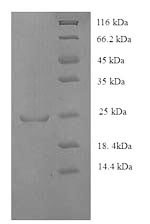

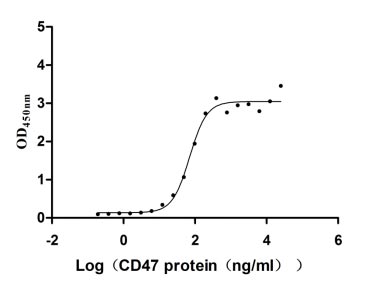
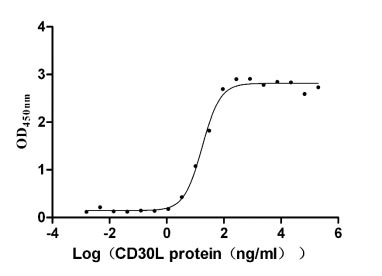
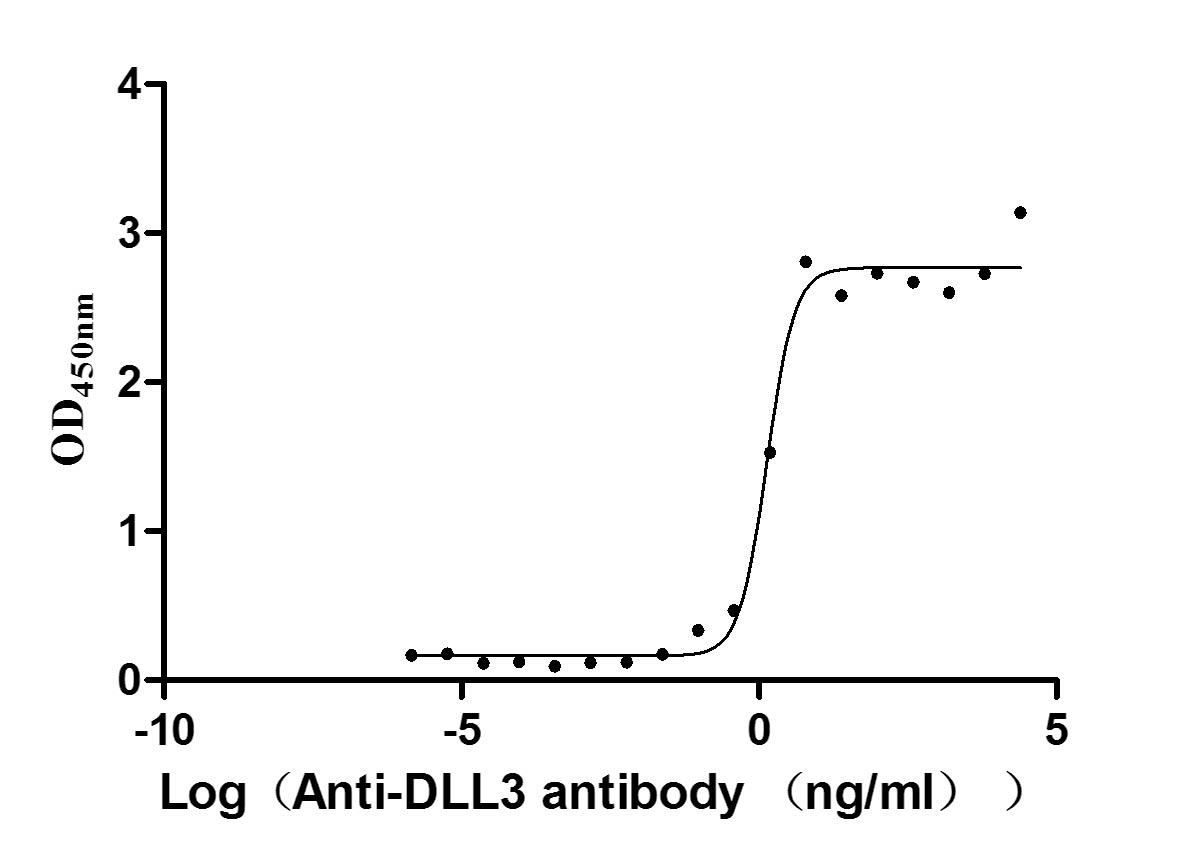
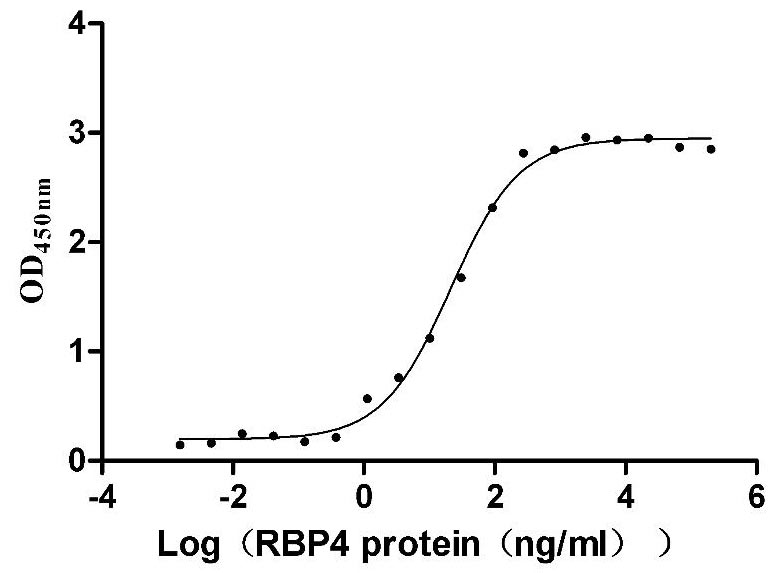
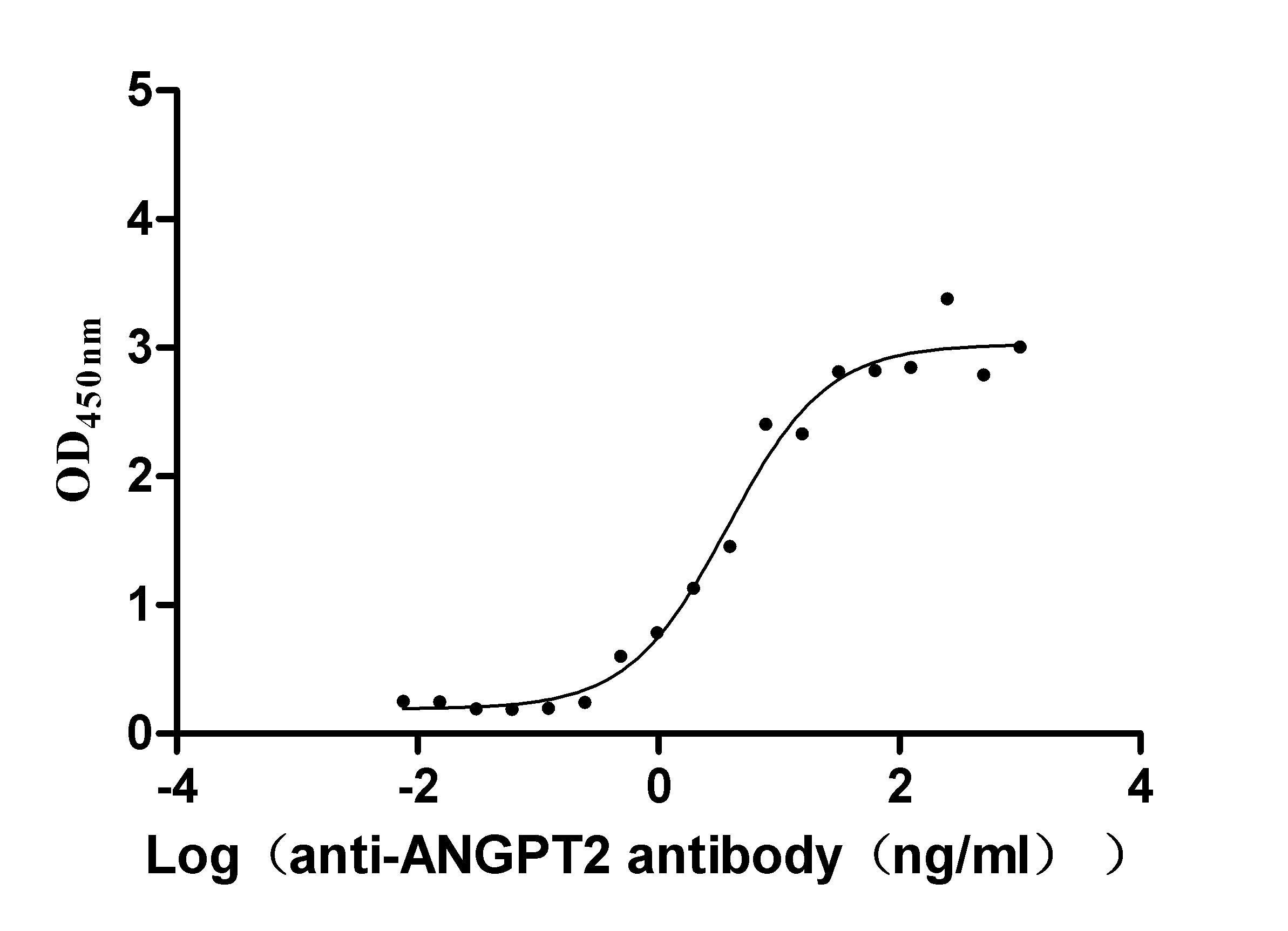
-AC1.jpg)
